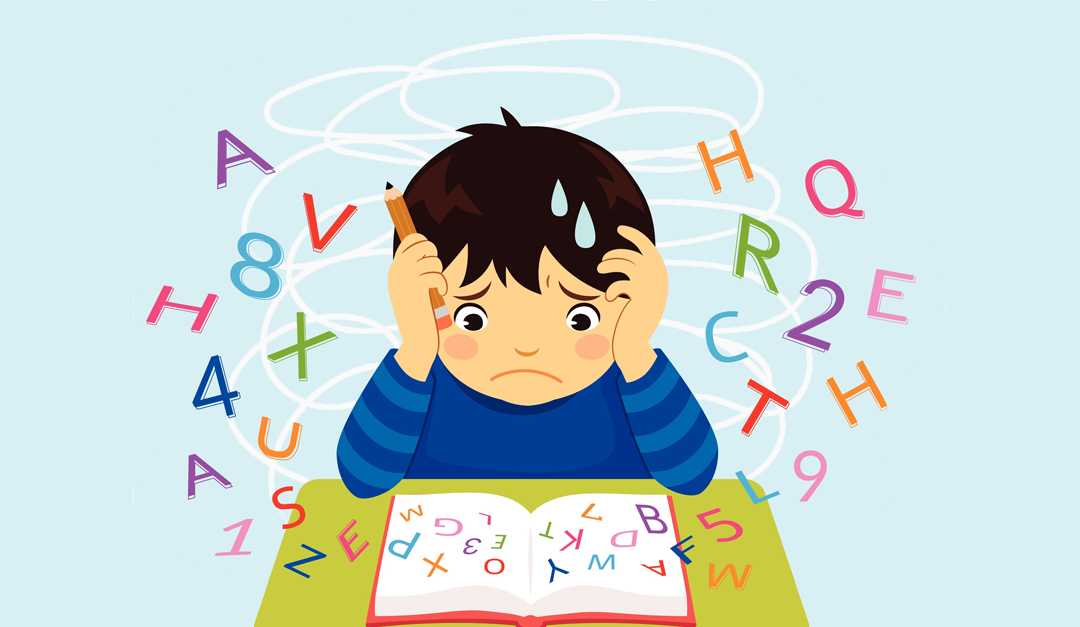Tips for detecting dyslexia at an early age
Dyslexia is a learning difficulty that primarily affects reading and writing skills. It occurs due to differences in how the brain processes language, making it challenging for individuals to decode words and spell correctly. Despite these challenges, dyslexia is not related to intelligence; many people with dyslexia are highly creative and excel in various fields. Understanding dyslexia is crucial to providing the right support and strategies, allowing individuals to build confidence and achieve their potential.
According to the World Health Organisation (WHO, 1997 – ICD 10), dyslexia is a specific reading disorder whose ‘main feature is a specific and significant difficulty in the development of reading skills that cannot be explained solely by mental age, visual accuracy problems, or inadequate schooling. The ability for reading comprehension, written word recognition, oral reading and completion of written tasks are affected. Spelling difficulties often persist into adolescence even after some progress in reading has been made and are frequently related to specific reading disorders. Specific developmental reading disorders are commonly accompanied by a previous history of speech and language development disorders and are often associated with emotional and behavioural problems during the school years.
In other words, it would be a cognitive disorder of a specific and significant nature that affects a specific aspect of learning that occurs in children who do not present any other physical, psychological or socio-cultural problem, and whose origin seems to derive from a neurodevelopmental disorder.

Dislexia today:
Fortunately, in recent times, we can now talk about dyslexia without it meaning low intelligence. However, we still have a long way to go before we can all understand how a child with dyslexia may feel and how to intervene in these cases from the family, teachers and medical specialists.
It is still necessary to provide information to all those involved in the child’s education so that they understand what is happening to them without affecting their self-esteem. When we are given the diagnosis, many of the parents are very overwhelmed, but many children feel relieved because at least ‘it is not their fault’, but it is something they suffer from.
what does a child with dyslexia look like?
-Feels different
-Thinks he/she is clumsy because he/she can’t do what others do.
-Takes a long time and has to make a lot of effort to achieve half as much as others.
-Doesn’t understand why only the result is rewarded and not the effort.
-He is tired of being called lazy or unmotivated.
-He does not understand why they do not value the other areas in which he is good, nor why they force him to read aloud in class or repeat essays because they have a spelling mistake.
It is not a question of their ability to make an effort, as these children make double or triple the effort of the rest.
It is totally unfair to call them lazy, or unmotivated to learn, or to make them feel that they are not good enough to do this or that race….. We forget that what is important is experimentation and the desire to learn new things, and we can adapt all of this so that we don’t necessarily have to go through long reading or writing long subjects or taking long exams.

Signs that may indicate some degree of dyslexia include:
There can be difficulties in accessing the vocabulary for certain words or remembering their names. Tasks that require this skill often become time-consuming and require significant effort.
Firstly, difficulties in sequencing or organizing events, days, instructions, or steps to reach a result. For instance, this can be observed when telling a story, learning vocabulary, days of the week, or months of the year. In some cases, even remembering the multiplication tables can be affected.
Additionally, a lack of concentration and attention can be noticeable.
Moreover, difficulties in learning to read and write are common. Children with dyslexia may make frequent spelling errors such as rotating, inverting, or changing letters. Specifically, they might show reading errors like inverting syllables or confusing letters such as p, b, d, and q. As a result, they may have poor reading comprehension and need to read the text multiple times to understand its meaning.

-Significant difference between motor and language skills. Express themselves much better in speaking than in writing.
-They have motor incoordination and difficulties in performing tasks requiring static and dynamic balance. Also in eye-hand laterality.
-Is creative and imaginative.
-Learns best by experimentation and doing things by themselves, with their own hands. Works best in areas that need few and very concrete instructions. That serve an immediate and practical purpose.
-Occasionally, visual problems are detected at a functional level, for example: problems in saccadic movements, fixation to a near point, change of visual focus from a distant point to a near point, etc. This can be seen in head shaking when reading, needing to follow the text with a finger, winking or moving too close to the paper.
Methods to address it:
They have a different experience and perception of the world around them. Moreover, they learn in a different way, which could bring great richness to the group. However, learning in the current system results in the acquisition and development of compensatory skills in order to adapt to the environment. This, in turn, also makes them more creative and more adaptable, especially in cases where self-esteem has not been affected.
Fortunately, thanks to new technologies, we already have apps to dictate and listen to texts, as well as methodological adaptations for these diagnoses that allow these children to demonstrate what they do know instead of what they cannot.
At Kokoro Kids, we offer games and tasks that assist in the initial learning of reading and writing in a playful and repetitive way, which undoubtedly helps train these skills at an early age. Furthermore, by reinforcing their achievements and providing immediate feedback, it enhances their motivation for learning.
